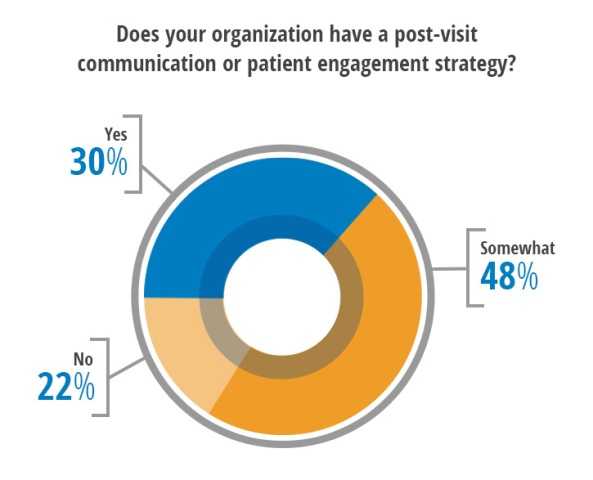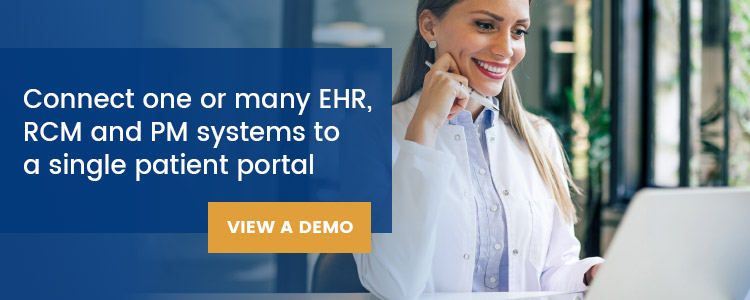Utilizing HIPAA Compliant Patient Surveys to Optimize Patient Engagement and Increase Effectiveness of Post Visit Communication
- Blake Rodocker
- July 31, 2017

Updated on November 24, 2020.
Having a post-visit communication plan can significantly improve patient outcomes by reducing the number of emergency visits, decreasing the hospital readmission rate, and improving chronic disease management.
“Patients who effectively used a portal were 2-4% less likely to be hospitalized. Those who engaged with the portal were 3.2% less likely to visit the emergency room. The average length of stay after being hospitalized decreased by 11%. Re-admission rates were about 2% lower among users of patient portals compared to those who did not make use of a patient portal.” — MIS Quarterly[¹]
Utilizing HIPAA compliant patient surveys is an excellent way for providers to gather post-visit information. This enables them to monitor patient well-being, verify medication adherence, and review care plan compliance, all of which improve patient satisfaction and helps patients maintain good health. Despite the importance of follow-up communication, few healthcare organizations have a robust post-visit communication plan in place.
A recent survey of 50 health professionals and healthcare administrators conducted by Bridge Patient Portal, demonstrated that only 30% of organizations have an adequate post-visit communication plan.
A survey of 50 health professionals and healthcare administrators conducted by Bridge Patient Portal regarding HIPAA compliant patient surveys.
The survey also examined the areas of post-visit communication that pose the most significant challenges for healthcare organizations.
Post-visit patient communication challenges
- General inquiries
- Bill payment
- Patient medication adherence management
- Care plan guidance and management
- HIPAA compliant appointment reminders
- Prescription refill request
Post-visit communication and patient engagement goals
For survey respondents whose organizations do have a patient engagement strategy, when asked which goals they were trying to accomplish, the majority (59%) said continuity of care for better health.
A survey of 50 health professionals and healthcare administrators conducted by Bridge Patient Portal regarding HIPAA compliant patient surveys.
Barriers to implementing HIPAA compliant patient surveys
The Bridge Patient Portal survey indicated that there are multiple barriers to addressing post-visit patient communication challenges. According to the study, the two largest obstacles for healthcare organizations are “internal problems with managing existing technology” and “lack of knowledge to produce a satisfactory solution.” Moderate barriers include lack of internal staff resources, lack of budget, and lack of interest by management.

Conclusion
The results show that post-visit patient communication is a significant problem for many healthcare organizations, and the barriers to adoption cannot always be resolved internally. For this reason, it is increasingly essential for organizations to work with third parties, including patient engagement strategists, consultants, and vendors that offer patient survey software to develop comprehensive plans to improve post-visit communication and, as a result, patient health outcomes.
Many healthcare organizations struggle with piecemealed Electronic Health Record (EHR), Revenue Cycle Management (RCM), or Practice Management (PM) solutions. When implementing a post-visit solution, integrating seamlessly with existing technology can have countless benefits. Bridge is an EHR agnostic patient portal and can be interfaced with any EHR/RCM/PM software system, even more than one simultaneously.
Bridge is a health-tech company that offers a superior patient portal solution for healthcare organizations and their patients. With Bridge Patient Portal’s robust, HIPAA compliant patient surveys, you will have a trusted partner to build your organization’s post-visit communication plan.
- Bao, C. (2020). Patient-provider Engagement And Its Impact On Health Outcomes: A Longitudinal Study Of Patient Portal Use. [online] Available at: https://utexas.app.box.com/s/yf2pvxg37lr7w2921q4lit0byrh694t5 [Accessed 24 Nov. 2020].

